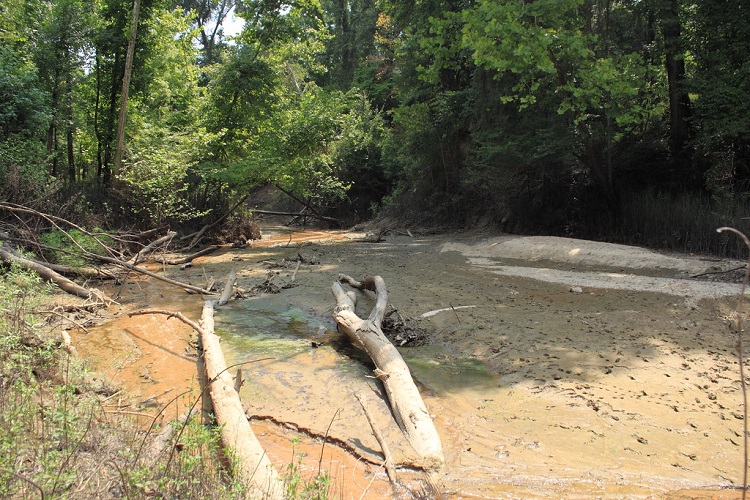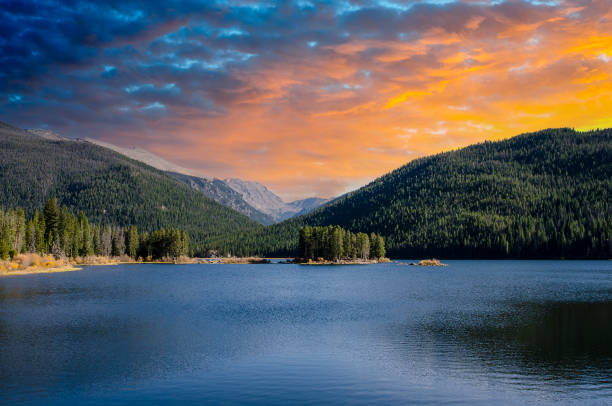Olympic National Park, with its diverse landscapes and ecosystems, is a wonderland for adventurers, drawing hikers, photographers, and nature enthusiasts from around the world. However, as with any wild place, certain natural phenomena can cause curiosity or even concern for visitors. One common question that arises is whether quicksand exists in Olympic National Park.
Quicksand has a reputation for being dangerous and potentially life-threatening, so it’s natural for visitors to wonder if they might encounter it.
What is Quicksand?
Quicksand forms when water saturates loose sand or fine sediments, creating a gel-like mixture that behaves like both a liquid and a solid. While it looks like ordinary ground, quicksand loses its solid structure when pressure is applied, making it difficult to move freely once you step into it.
Quicksand is often found in areas with a combination of water sources and sandy or loose sediment, such as riverbanks, tidal flats, and marshes.
Quicksand isn’t as dangerous as portrayed in movies, where people are often shown sinking entirely. In reality, quicksand is denser than the human body, meaning you’re likely to sink only up to your waist, not disappear entirely. The real challenge is getting out without panicking or struggling, which can make it harder to free yourself.
Does Quicksand Exist in Olympic National Park?
Yes, quicksand can potentially be found in Olympic National Park, though it’s not common. Given the park’s diversity of landscapes—including rainforests, mountains, rivers, and coastal areas—some locations could occasionally have the right conditions for quicksand to form.
Certain areas within the park, particularly along riverbanks, near coastal tides, and in wet marshes, are more likely to have the right combination of sand, sediment, and water to create quicksand.
Likely Areas for Quicksand in Olympic National Park
-
Riverbanks: The park’s rivers, such as the Hoh, Queets, and Elwha, occasionally create quicksand near the water’s edge, where loose sand or mud is constantly saturated by the flowing water. These areas might be especially prone to quicksand after periods of heavy rain or seasonal flooding, which can loosen and saturate the sediment.
-
Coastal Beaches and Tidal Flats: Olympic National Park is home to several beautiful beaches, including Ruby Beach and Rialto Beach, where tidal flats meet sandy areas. When the tides recede, wet sand can temporarily trap unwary beachgoers, creating a situation similar to quicksand.
-
Wetlands and Marshy Areas: The park’s coastal rainforests and wetlands are home to soft, muddy terrain that, under the right conditions, can resemble quicksand. While these spots are less likely to form true quicksand, the mixture of mud and water in these areas can be sticky and challenging to walk through, especially if water levels are high.
Understanding the Risks of Quicksand
While quicksand can indeed form in some parts of Olympic National Park, it’s not typically a major hazard. The main risk is getting stuck temporarily, which can be more frustrating than dangerous. However, getting stuck can still be unsettling, especially if you’re alone or unprepared.
Most people who encounter quicksand in the park find it in shallow areas and manage to get out with minimal effort by staying calm and following basic steps to free themselves.
The real danger with quicksand in remote areas is the possibility of becoming immobilized in a place where help is not immediately available. Because Olympic National Park is vast, with areas that have limited cell service, it’s essential to be cautious and informed, especially if you’re hiking alone or venturing into isolated areas.
How to Identify Quicksand in the Park
Knowing how to identify potential quicksand areas can help you avoid getting stuck. Here are some tips:
-
Check the Ground: Areas with loose, fine sand or silt mixed with water are more likely to have quicksand. If you notice ground that looks extra wet or “shiny” with fine sediments, it may be quicksand.
-
Avoid Waterlogged Areas Near Rivers and Beaches: Quicksand often forms in places where water is receding, such as riverbanks or tidal flats. If the sand appears extra loose or your feet sink slightly with each step, it could be a sign of quicksand.
-
Test with a Stick: Before walking across an area of wet sand, use a stick or trekking pole to test its stability. If the stick sinks easily, it may indicate a quicksand-like consistency.
What to Do if You Encounter Quicksand
If you accidentally step into quicksand or a quicksand-like area, it’s important not to panic. Here’s a step-by-step guide on what to do:
-
Stay Calm and Don’t Struggle: The more you struggle, the more likely you are to sink deeper. Instead, take deep breaths to stay calm.
-
Lean Back and Spread Out: Try to lean back slowly to distribute your weight more evenly. By increasing your surface area, you reduce the pressure on the quicksand, making it easier to pull yourself out.
-
Move Slowly and Wiggle Your Legs: Slowly move one leg at a time in a small, circular motion to loosen the sand around your legs. As the sand loosens, gently lift your leg upward.
-
Use a Stick or Friend for Support: If you have a stick, trekking pole, or friend nearby, use them for leverage. Pressing down with a stick can help you gain enough stability to pull yourself out.
-
Crawl to Solid Ground: Once you’re free, crawl to firmer ground to avoid stepping back into the quicksand. This technique helps distribute your weight evenly as you move to safety.
General Safety Tips for Visiting Olympic National Park
-
Plan Ahead: Familiarize yourself with the park’s different landscapes, and identify which trails or areas are close to rivers, marshes, or tidal flats where quicksand could form.
-
Wear Appropriate Footwear: Hiking boots or water-resistant shoes with good traction can help you avoid slipping and give you better stability if you encounter muddy or quicksand-like areas.
-
Hike with a Companion: Having a friend with you can make a big difference in case you encounter difficult terrain. They can help you get free from sticky mud or alert others if you get stuck.
-
Carry a Hiking Stick or Trekking Pole: Not only can a stick help you identify unstable ground, but it can also be used for balance and leverage if you step into quicksand.
-
Avoid High-Tide Areas on the Beach: Tidal flats can quickly change with the tides, so pay attention to tide schedules if you’re hiking along the coast.
Conclusion
While quicksand is not a common threat in Olympic National Park, certain areas have the right conditions for it to form, especially near riverbanks, tidal flats, and marshy landscapes. With a basic understanding of what quicksand is and how to safely navigate areas where it might occur, you can confidently explore the park without worry. Remember to stay calm if you encounter quicksand, move slowly, and follow the steps for freeing yourself.
Olympic National Park is a stunning destination filled with diverse ecosystems, unique landscapes, and endless opportunities for adventure. By being prepared and knowledgeable, you can enjoy everything the park has to offer—without getting bogged down in the occasional patch of quicksand.


